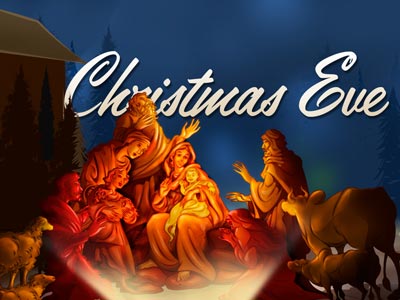-
As It Was In The Days Of Noah: For The First Sunday In Advent
Contributed by Mark A. Barber on Nov 25, 2025 (message contributor)
Summary: The church needs to stop being distracted from its God-given mission by engaging in useless speculations
As it was in the Days of Noah
Matthew 24:36-44
Even in today’s increasingly biblically illiterate world, the image of Noah and the Ark persists. For many it is cause for derision even as people of Noah’s day mocked him for building it. Just the thought of water covering the entire surface of the dry land brings up the sneer of contempt by skeptics, both then and now. The idea of gathering all the animals as Noah was commanded seems ridiculous to them.
But the Bible records that the flood did come and covered the earth. The cultured despisers of that age perished because they did not heed the message Noah gave to them from the hand of God. So to it shall be to those who scoff about the return of Jesus Christ. But Peter reports that they mocked in his day. The world has always been full of mockers. Nothing has changed.
This morning’s passage comes from the middle of the sermon Jesus preached from the Mount of Olives a few days before His crucifixion. Plans were well under way to be rid of Him. Jesus had already left the Temple grounds for the last time. The last act was seeing the poor widow cast in her last two mites. What a condemnation of the Temple racket of his day. The rich were pouring their gold and silver to adorn the Temple itself. This poor woman is like the widow of Zarapath in the days of Elijah who was about to cook one final loaf of bread for her and her son and then die of starvation. This fate awaited the widow as well. But God sent Elijah to save her from death, and I am sure that Jesus did likewise. But if it was up to the Temple authorities, they were happy to let her die. After all, how many destitute widows were there in the land?
Upon exiting, the disciples were marveling at the beauty of that Temple. This became the occasion for a caustic response from Jesus. Not one of these glorious stones would be left upon another, a prophecy which came true before that wicked and evil generation passed from the scene.
Jesus then began His sermon to the disciples who had asked Him for a sign and the times of this destruction. This led to an apocalyptic speech. It is somewhat difficult to interpret in detail because much of the detail refers to the actual destruction of Jerusalem. To the Jews, this would seem like the end of the world. But it is also apparent that there are parts of His sermon that apply to his return at the end of the world itself. How should we discern what belongs where.
If one were to look at biblical prophecy in general, one often sees a double fulfillment motif. The prophecy is authenticated in the immediate future to demonstrate that the word came from God. But it also seems to function as a type of a greater fulfillment in the more distant future. If we look at the Immanuel prophecy in Isaiah 7 for example, we see a message given to King Ahaz by the Lord concerning Judah’s deliverance from the kings of Syria and Israel. A young woman would conceive and have a child named Immanuel whose name means that God is with us. By the time this child was weaned, the kings of Israel and Judah would be dead and there would be a peace in the land. The skeptics today would say that this is all to the prophecy. But to the Christian, we know that it points to the future coming of Jesus who would be personally the presence of God among the people. So most of the detail applies to the fulfillment in Isaiah’s day which authenticated his message as coming from God. But it points to when the Virgin Mary would conceive and bear the Son of God, our Immanuel.
Having established this point, we should realize that a lot of Matthew 24 was fulfilled in 70 AD. So the details here authenticate that Jesus truly spoke for God. Yet it also points forward to the end of the age. Not al of the details will correspond to that time, any more than all of the details of Isaiah 7 were meant to be applied to Jesus. Nevertheless, the scene of utter destruction seen in Jerusalem of 70 AD will be seen globally at the return of Jesus.
There are all kinds of books that have been written and are being written about the last days. I suppose someone will be more correct or should I dare to say less incorrect in discerning the time of Jesus return. We would do well to remember that the coming of the Messiah was the talk of Israel in the days of Jesus. Those in Qumran debated whether there would be one Messiah or two, one a priestly suffering Messiah and the other a kingly Messiah like David. They could not put the two together. This apocalyptic talk was also in the greater population as well. But Jesus came to a manger in Bethlehem. Who came to the manger? Were the Pharisees, Scribes, and Sadducees there? They could tell King Herod where the Christ would be born. But they missed the big event. Only Joseph and Mary who were there of necessity, the shepherds who were invited to witness the event, and the Gentile Magi to whom the star was revealed. No one figured it out. Some were closer than others, but they all missed it.

 Sermon Central
Sermon Central



